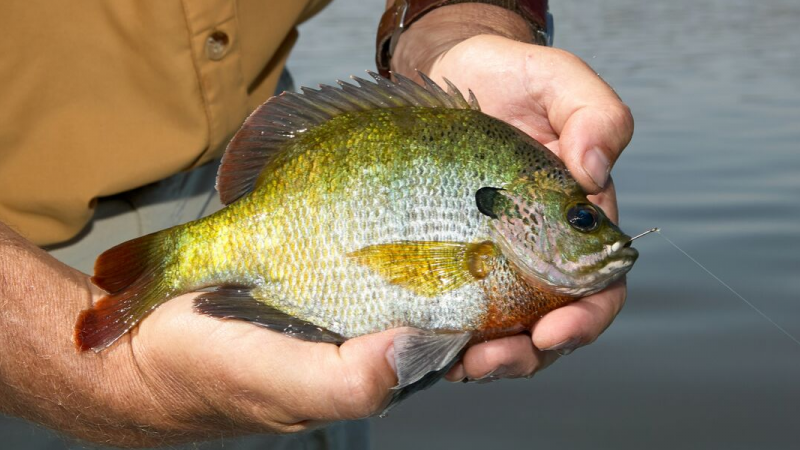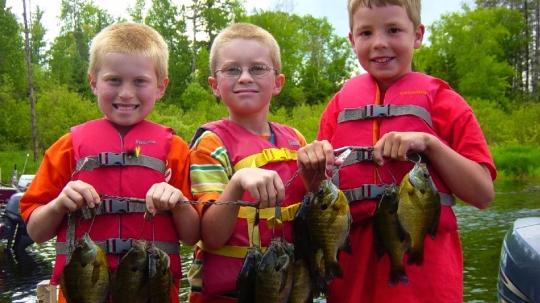
Bluegill Fishing
There are bluegills and there are BLUEGILLS! Lake Vermilion has BLUEGILLS! I have not met an angler yet that is too young or too old to catch "Bluegill Mania." They are delicious and a lot of fun to catch. Enough said. Here are some bluegill fishing tips to use on Lake Vermilion:
Our bluegill bite begins when the water temperature reaches about 65 degrees F. The early season bite will continue until spawning is complete. After that they will move to slightly deeper water (7-9 feet) adjacent to their spawning areas. During mid and late summer, the gills can be found foraging on mid-lake reefs. Sometimes they can be found near the edges of deep holes in 25 to 45 feet of water.
During their pre-spawn and spawn, bluegills can be found in 1-3 feet of water. Usually the bottom is soft, and their "nests" can usually be seen using polarized sunglasses. Lake Vermilion is a very large lake that is composed of many bays and channels.
I would begin searching the shallow water in these areas. All bays and channels will provide excellent spawning areas for the fish. After the spawn these fish will hold near their spawning grounds for a time, usually in slightly deeper water. At this time submerged vegetation will be the key. As we approach mid-summer, some bluegill will continue to be found in the submerged vegetation, some will move to mid-lake reefs. They will remain in these areas until fall. At several times during the summer we will have different insect hatches. When these hatches occur, the gills can be absent from their usual haunts for a day or so. They will return when the particular hatch is complete.
A light action rod with a spinning reel spooled with light monofilament line would be my first choice for bluegills. For shallow water fishing, I like to use a slip bobber with a light ball-head jig. My jig size would be 1/16 oz. With a jig larger than this, it would be difficult to get a hook set. If the jig is smaller than 1/16 oz. too many small fish, the ones we would release, would be injured. I prefer jigs over hooks because they are easier to remove and cause less damage to the fish. Jigs can be tipped with any type of grub worm, worms, or a piece of a night crawler. My favorite is a piece of a leech.
A piece of a sun baked leech stays on your jig the longest. When the fish move to deeper water, I take off the bobber and use the plain jig. I enjoy casting the jig into vegetation or to the tops of reefs. When the jig hits the water, watch and feel. Often you can see the strike before you can feel it. For younger and less experienced fisherpersons, I would recommend using the slip bobber.
Joe Panichi
Guide on Lake Vermilion since 1976
